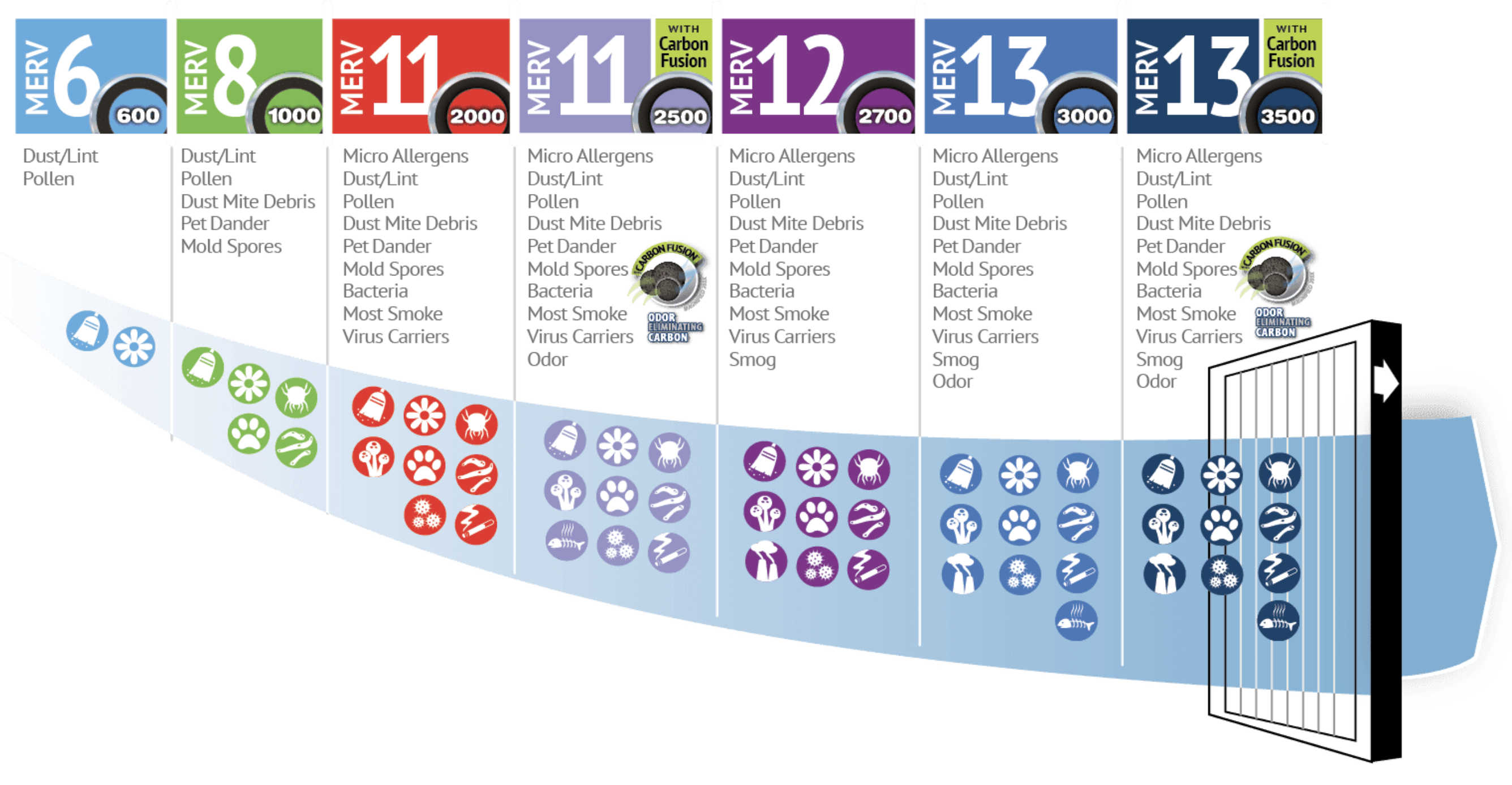What does Merv stand for
Everything You Ever Wanted to Know About MERV
We’ve been talking a lot about MERV ratings on furnace filters a lot lately. We hope you’ve been learning lots of tips and information! If not, here’s a brief synopsis about MERV, what it stands for, what it represents and what it means to you.
- MERV stands for Minimum Efficiency Reporting Value .
- MERV was developed by the American Society of Heating Ventilation and Air Conditioning (HVAC) engineers.
- It informs consumers about which environmental pollutants MERV-rated filters trap.
- MERV filters range from 1-16, and up to 20 in some cases.
- When buying MERV rated filters, you should always to check to make sure they’re “Made in North America”; if they come from overseas like China and India, you can’t be sure of the quality. Why? These countries are far less regulated in terms of air filter requirements.
- The higher the MERV rating on a filter, the fewer dust particles and other contaminants can pass through it.
- For most homes, a MERV rating between 7 and 11 is perfectly fine. Adequate airflow is necessary to regulate temperature and keep allergens out.
- Change your filters more often than the recommended time period if you live in construction zones, near congested freeways, have pets in the house or have family members who have allergies or asthma.
- The Camfil 30/30 is a mechanical vs. electrostatic filter, meaning it will retain its efficiency consistently over time.
- Filters capture common airborne particles such as pet dander, smog, dust, tobacco smoke, bacteria, and pollen.
- You’re better off purchasing MERV 8 filters and changing them more often rather than leaving MERV 13 and higher filters in for longer.
- MERV tests a filter’s performance by particle size, ranging from 0.3 – 10 microns in size, with a value based on the lowest, or minimum, efficiency for any given filter.
- MERV 13-16 filters are only needed for hospital, medical and general surgery settings.
- The higher the MERV rating, the fewer dust particles that can pass through
- The higher the MERV rating, the more frequently your filters need to be changed
- MPR stands for Micro-Particle Performance Rating and was developed by the company 3M. It is designed to rate the manufacturer’s filters and their ability to capture airborne particles smaller than 1 micron.
- FPR, also known as Filter Performance Rating, is yet another rating system, created by The Home Depot involving brands sold in their stores, including Honeywell. A color code and number scale (4 to 10) closely resembling the MERV rating characterizes the FPR.
- We recommend MERV 11 filters, which trap 65 to 79 percent of average particles of 1.0 to 3.0 microns in size, with an average particle size efficiency of 85 percent or better. MERV 12 filters trap 80 to 89 percent of average particles of 1.0 to 3.0 microns, with an average particle size efficiency of 90 percent or better. The 11s and 12s are similar, but we still recommend the 11.
Got more questions you want answered about MERV? We want to hear them. Call or email us, or catch up on social media. Now’s a good time to check your stash of furnace filters. Need more? Order in bulk today and SAVE!
